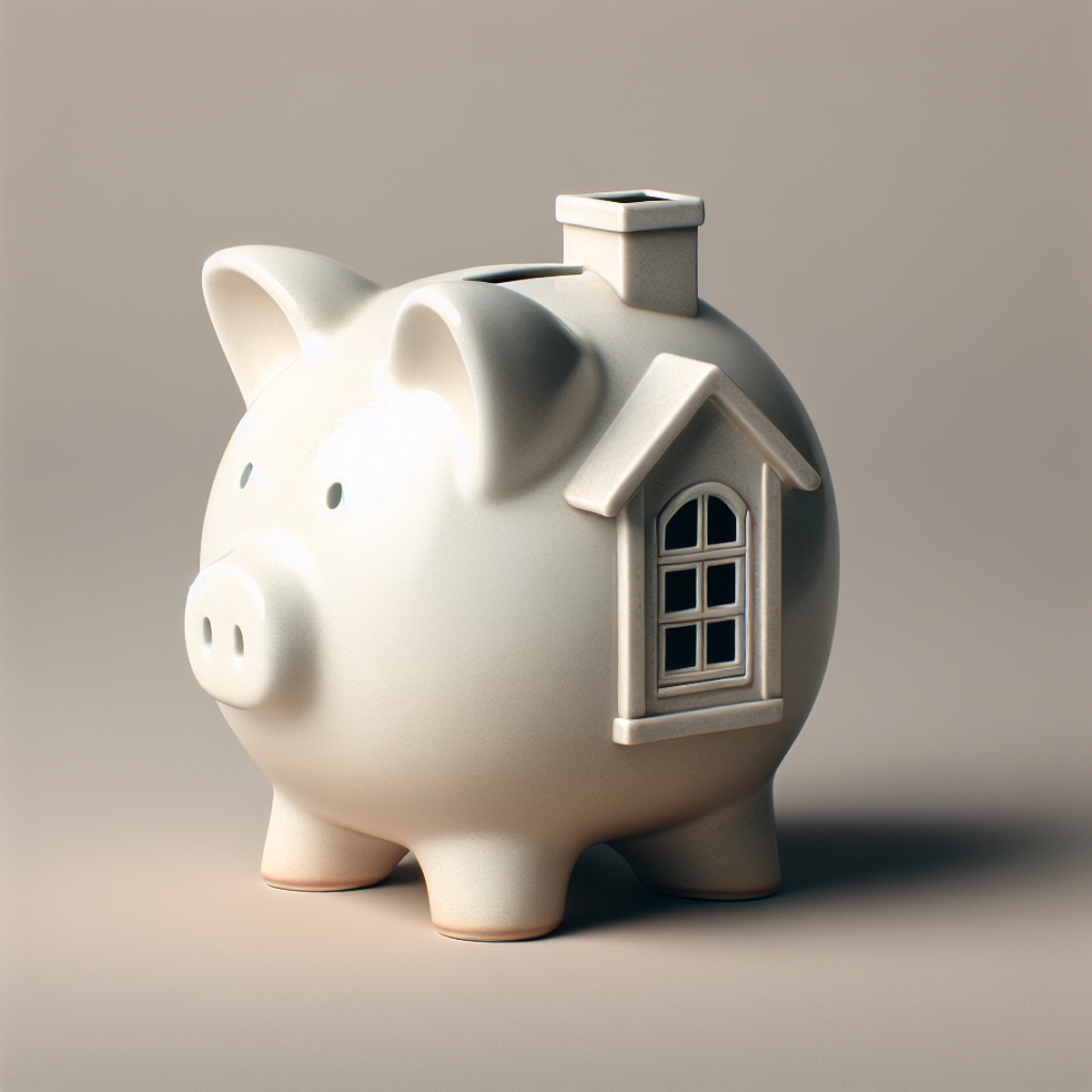Introduction
Embarking on the journey toward homeownership begins with a critical step: saving for a down payment. This pivotal sum of money opens the door to various mortgage options and ultimately, the keys to your new home.
Why is a down payment so vital?
Here are a few reasons why having a down payment is important when buying a house:
- It demonstrates financial responsibility and commitment to lenders.
- It can reduce your monthly mortgage payments.
- It may offer better interest rates and favorable loan terms.
Homebuyers often encounter hurdles when accumulating down payment savings. High rent costs, daily expenses, and debt can impede progress, making it challenging to set aside significant funds.
Despite these challenges, the benefits of homeownership—such as building equity, tax advantages, and creating a long-term investment—motivate many to persevere in their savings efforts.
1. Choose the Right Savings Account
When it comes to saving for a down payment, where you save is as important as how much. Selecting the right savings account can help you grow your funds faster and reach your goal sooner.
Types of Accounts to Consider
High-yield savings accounts, money market accounts, and GIC’s are all excellent choices for down payment savings. Here’s why each one can be beneficial:
High-yield savings accounts
These offer higher interest rates compared to regular savings accounts. The extra interest can significantly boost your savings over time.
Money market accounts
These often have higher interest rates than high-yield savings accounts but may require a larger initial deposit or balance. They also often come with check-writing capabilities, providing flexibility when it comes time to make your down payment.
GIC’s
GICs typically offer the highest interest rates but your money is locked in for a set period. If you have a clear timeline for when you’ll need your down payment, this could be a good option.
Tips for Maximizing Your Savings
To make the most of these options, consider the following strategies:
- Start early: The sooner you start saving, the more time your money has to grow through compound interest.
- Automate contributions: Set up automatic transfers from your checking account to your savings account each month. This ensures consistency and removes the temptation to spend what you should be saving.
- Compare offerings: Different banks offer different interest rates and terms, so compare offerings to find the best fit for your needs.
Remember, every little bit helps when you’re saving for a down payment, so choose wisely and watch your funds grow.
Onward to creating an optimized budget for saving!
2. Optimize Your Budget for Saving
Creating a down payment savings plan begins with effective budgeting techniques. You first need to track your income and expenses meticulously to identify areas where you can cut back. Consider using budgeting apps that categorize your spending, providing a clear picture of where your money goes each month.
Practical Tips for Cutting Expenses:
- Review Subscriptions: Cancel any subscriptions you no longer use or need.
- Reduce Utility Bills: Implement energy-saving measures to lower monthly costs.
- Shop Smarter: Use coupons, buy in bulk, and choose generic brands over name brands when possible.
Increasing your saving potential may require more than just cutting back; sometimes, it involves making significant lifestyle changes. One such change could be getting a roommate. Sharing housing costs temporarily can dramatically reduce one of your largest monthly expenditures—rent. Here’s how to approach this option:
- Screen Potential Roommates: Ensure compatibility in terms of lifestyle and financial responsibility.
- Set Clear Expectations: Discuss how bills will be split and establish household rules.
- Use a Written Agreement: Protect all parties involved with a formal arrangement detailing the terms of the living situation.
By implementing these measures, you create additional financial breathing room, allowing you to channel more funds into your down payment savings account.
3. Boost Your Income with a Side Hustle
Increasing your income can be just as crucial as managing expenses when saving for a down payment. Side hustles offer a flexible way to earn extra cash that can be specifically allocated towards your home-buying fund. Here are some side hustle ideas with notable earning potential:
1. Freelance Work
Utilize your professional skills such as writing, graphic design, or programming on platforms like Upwork or Freelancer.
2. Ride-Share Driving
If you own a car, services like Uber or Lyft can help you earn money during your free time.
3. Pet Sitting/Dog Walking
Animal lovers can join sites like Rover to find pet sitting or dog walking gigs in their area.
4. Online Tutoring
Share your knowledge in subjects like math, science, or languages through online tutoring sites.
5. Selling Handmade Goods
Platforms like Etsy allow you to sell crafts, jewelry, or art you’ve created.
6. Renting Out Space
If you have an extra room or a rarely used parking spot, consider renting it out on Airbnb or SpotHero.
Directing the additional income from these side hustles into your down payment savings can accelerate your progress towards homeownership. Remember to keep track of any income and associated expenses for tax purposes.
4. The Role of Debt Management in Saving for a Down Payment
Debt plays a significant role in your ability to save for a down payment. High levels of debt can limit your saving potential and may even disqualify you from obtaining a mortgage due to an unfavorable debt-to-income ratio, a key indicator lenders use to assess your financial health.
Here are some strategies that can help you manage your debt effectively:
- Pay off high-interest debts first: Target credit cards or personal loans with high-interest rates. This strategy, known as the avalanche method, will save you money in the long run.
- Consolidate your debt: If you have multiple sources of debt, consider consolidating them into one loan with a lower interest rate – this could potentially reduce your monthly payments and make it easier for you to save.
- Automate your payments: To avoid missing payments and incurring late fees, set up automatic payments for all your debts.
Understanding how to manage debt is an essential step towards achieving homeownership. So start paying off debt today and improve your debt-to-income ratio to enhance your saving potential.
5. Considerations When Using Retirement Funds for a Down Payment
As you map out your savings strategy, one option that might cross your mind is dipping into your retirement funds. While it’s possible and encouraged to leverage your RRSP for home buying purposes, it’s crucial to understand the potential implications. Also the FHSA (first home savings account) is an excellent way to start saving up.
Strive for a 20% Down Payment to Reap These Benefits
When you aim to save up for a 20% down payment, you can enjoy several advantages. Not only will sellers find you more appealing as a buyer, but you will also experience tangible financial benefits:
1. Lower Borrowing Costs
A significant down payment means you have to borrow less money, resulting in lower monthly mortgage payments.
2. Equity Building
Starting off with more equity in your home provides a safety net against changes in the housing market and can be advantageous if property values decrease.
3. Competitive Mortgage Rates
Lenders often give better interest rates to borrowers who contribute a larger down payment because they see it as a reduced risk.
4. No CMHC Mortgage Insurance
One immediate benefit of reaching the 20% threshold is avoiding CMHC insurance. CMHC insurance is necessary when your down payment is below 20%, adding an extra fee to your monthly expenses. B
By striving for a 20% down payment, you not only reduce some of the financial burdens associated with owning a home but also position yourself for long-term success and stability.
Conclusion
Embarking on the journey of saving for a down payment is a commitment that paves the way to homeownership. With practical strategies and disciplined savings habits, your dream of owning a home is within reach.
Start by:
- Choosing the right savings account
- Optimizing your budget
- Initiating a side hustle
- Leveraging down payment assistance programs
- Managing debt efficiently
- Thoughtfully considering the use of retirement funds
Take action today:
- Assess your financial situation and determine the best savings strategy for you.
- Set clear goals and create a timeline for achieving your down payment.
- Implement budgeting techniques to increase your saving potential.
- Explore additional income sources to accelerate your savings.
Remember, every small step contributes to a larger goal. You have access to tools and resources that can support you in navigating the complexities of saving for a down payment. By staying informed and proactive, you unlock the door to homeownership.
Begin implementing these strategies now and watch your savings grow. Your future self will thank you when you turn the key to your new home.




